Roosevelt Avenue in Queens, New York City, has increasingly become known for its blatant and pervasive street prostitution, drawing comparisons to the red-light districts of Bangkok. This bustling commercial strip, situated in Rep. Alexandria Ocasio-Cortez’s district, is now a focal point of concern for residents and business owners alike, who describe a neighborhood besieged by open solicitation, illegal vending, and a perceived lack of effective law enforcement.
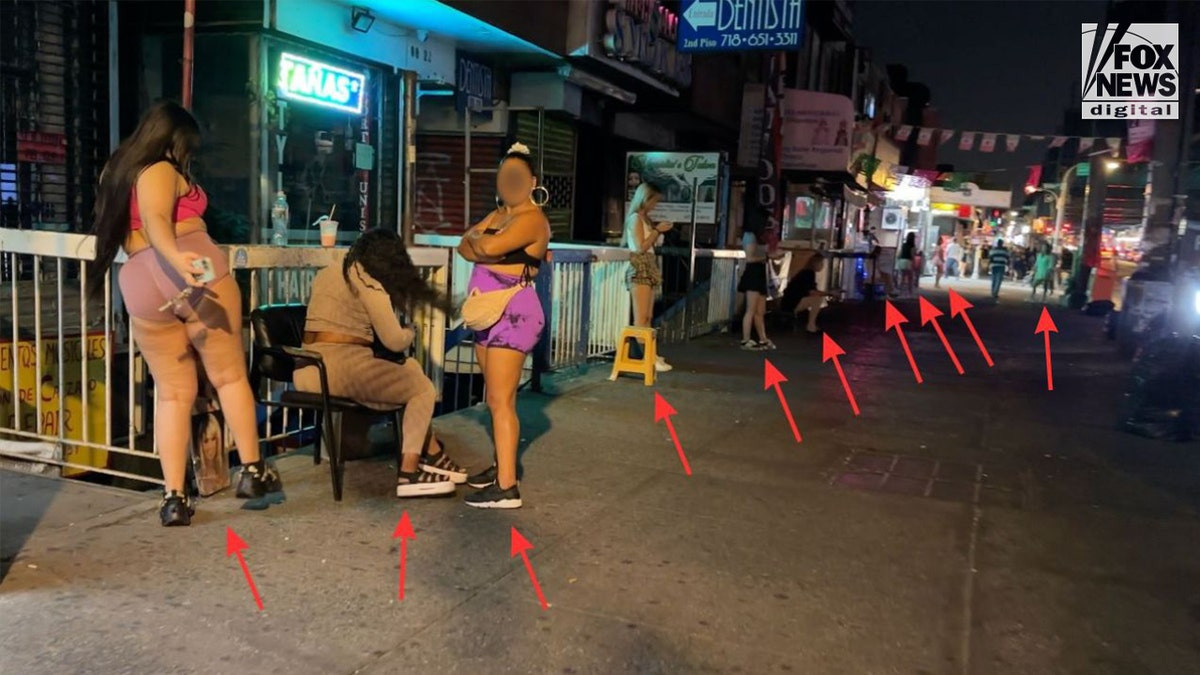 prostitutes line a street in Queens
prostitutes line a street in Queens
Image showing alleged prostitutes lining a street in Queens, New York City, highlighting the red light street issue on Roosevelt Avenue.
The Scene on Roosevelt Avenue: A Neighborhood in Distress
Locals paint a stark picture of Roosevelt Avenue, describing it as resembling a “Third World” environment rather than a typical New York City neighborhood. Migrant women, often scantily dressed, openly solicit sex along blocks of the avenue, day and night. This brazen activity occurs in plain sight, near residential areas and schools, becoming a disturbing daily reality for families and children. Business owners report intimidation from pimps and a decline in customer traffic, pushing some to the brink of closure. The streets are further congested by illegal vendors selling food and goods without permits or health inspections, adding to the atmosphere of lawlessness and neglect.
The area, ironically nicknamed the “Avenue of the Sweethearts,” is a major thoroughfare in Queens, located beneath the elevated subway line connecting Manhattan to local communities. This central location means that residents, including school children and families, are inescapably confronted with the sex work as they navigate their daily routines. Eyewitness accounts describe children passing by sex workers on their way to school and extracurricular activities, normalizing what many consider a deeply inappropriate and harmful environment for young people.
Residents Speak Out: Fear and Frustration in the Community
Ramses Frías, a long-time resident and now activist, voices the growing despair of the community. He laments the transformation of his neighborhood, stating, “This doesn’t feel like my home. I’ve been here my whole life, and this feels like I’m a tourist in a Third World country.” He emphasizes the hard work and aspirations of the local immigrant and second-generation American community, contrasting it with the “evil” and “bad things” that have taken hold. Frías and others express frustration with the perceived inaction of elected officials and law enforcement, feeling abandoned and forced to fend for themselves.
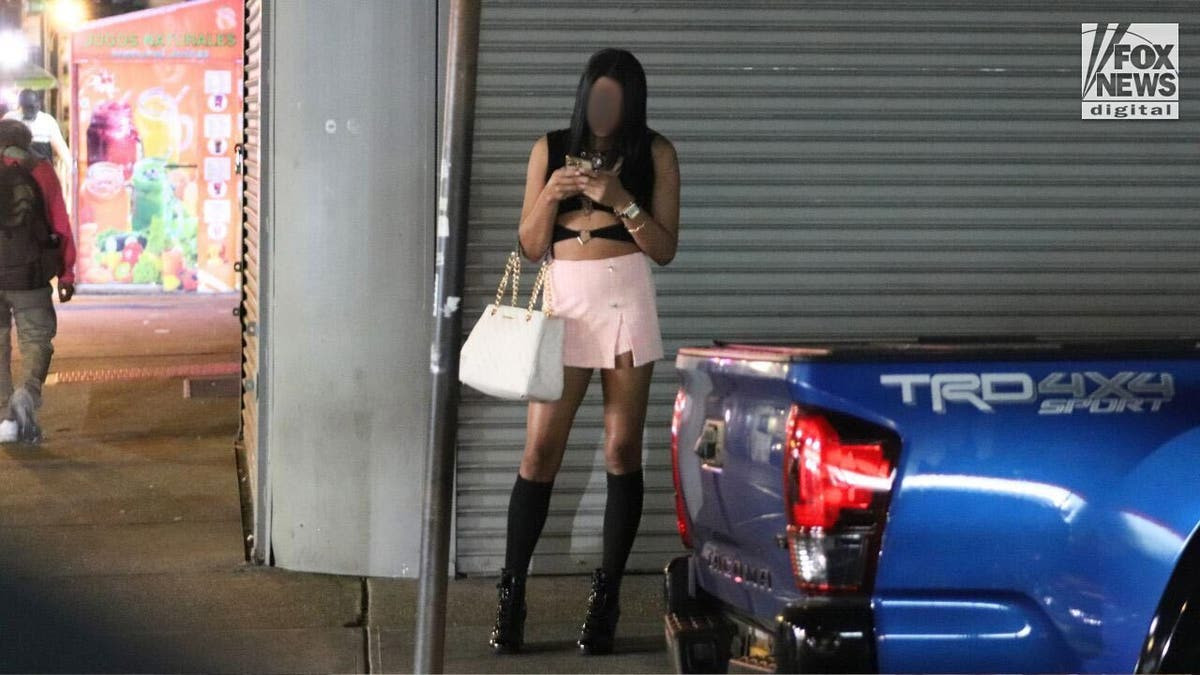 A sex worker in AOC
A sex worker in AOC
Image depicting an alleged sex worker in AOC’s district texting, illustrating the visible street prostitution on Roosevelt Avenue.
Business owners, fearing retribution, often speak anonymously. One store owner detailed receiving threats after reporting a nearby brothel to the police. He expressed fear for his livelihood, stating that the decline in customers due to the area’s deteriorating conditions may force him to shut down his business. This fear underscores the climate of intimidation and lawlessness that has taken root along Roosevelt Avenue.
Law Enforcement and Political Response: Raids and Rhetoric
In response to mounting pressure, the NYPD conducted a raid on a brothel off Roosevelt Avenue, resulting in three arrests. However, subsequent observations revealed that the raid had little immediate impact. Alleged sex workers and clients were seen entering and exiting the same location shortly after the raid, suggesting a persistent and deeply entrenched problem. Curtis Sliwa, founder of the Guardian Angels, characterizes the police actions as mere “show raids,” asserting that they fail to address the root causes by not arresting johns, prostitutes, madams, or landlords. He points to past corruption scandals involving NYPD officers protecting brothels in nearby Flushing, suggesting a systemic issue of corruption may be contributing to the problem on Roosevelt Avenue.
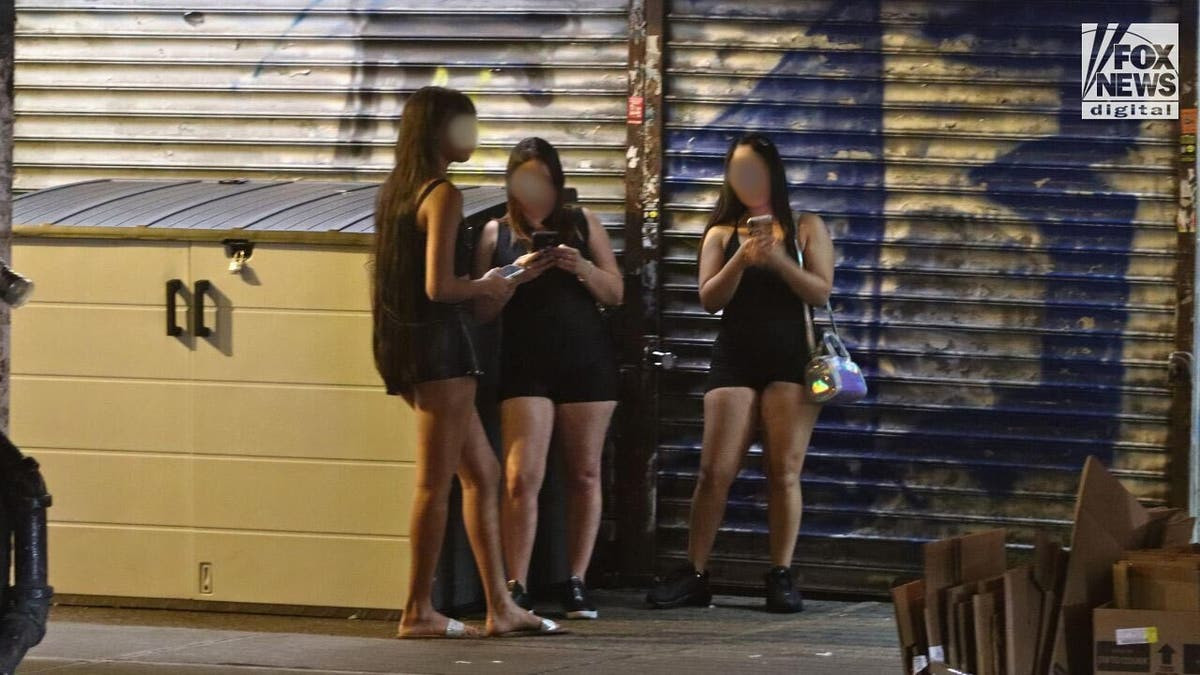 Prostitutes at work in Queens
Prostitutes at work in Queens
Image showing multiple alleged prostitutes at work in Queens, highlighting the scale of street prostitution on the red light street.
Local politicians have offered varied responses. Councilmember Francisco Moya acknowledges the severity of the situation, attributing it to post-COVID conditions and the influx of migrants, while also criticizing fellow Democrats for hindering enforcement efforts. State Senator Jessica Ramos has previously referred to prostitution as “survival work” and supported decriminalization, though she expressed approval of the recent raid, blaming Mayor Adams for neglecting community concerns due to scandals. Rep. Alexandria Ocasio-Cortez’s office has remained largely silent on the issue, despite the district being heavily impacted. This perceived neglect from elected officials fuels residents’ frustration and sense of abandonment.
Broader Implications: Migration, Survival, and Community Safety
The situation on Roosevelt Avenue raises complex questions about the intersection of migration, poverty, and urban crime. The influx of migrants, many without work permits, are described by some officials as contributing to the rise in both illegal vending and prostitution as means of survival. While some politicians advocate for decriminalization and view sex work through the lens of economic necessity, community members and law enforcement officials express concern about exploitation, human trafficking, and the overall decline in quality of life and safety in the neighborhood.
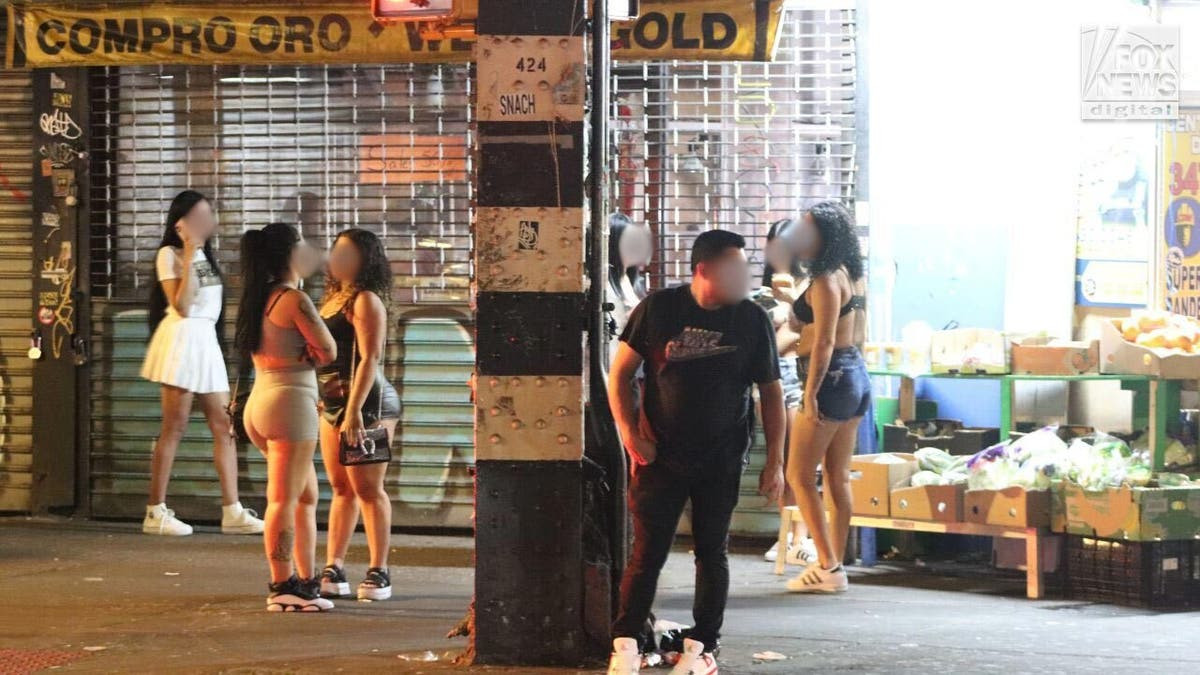 Prostitutes at work in Queens, New York City
Prostitutes at work in Queens, New York City
Image depicting a group of alleged sex workers on a corner in Roosevelt Avenue, Queens, illustrating the open and visible nature of the red light street.
The Queens District Attorney’s Office states they are actively working to combat prostitution and crime, citing the eviction of numerous prostitution locations. However, the visible and persistent nature of the problem suggests that these efforts are insufficient to address the deeply rooted issues plaguing Roosevelt Avenue. As residents organize rallies and demand action, the future of this once vibrant commercial strip hangs in the balance, raising critical questions about how New York City will address the complex challenges of its evolving urban landscape and the realities of its red light streets.
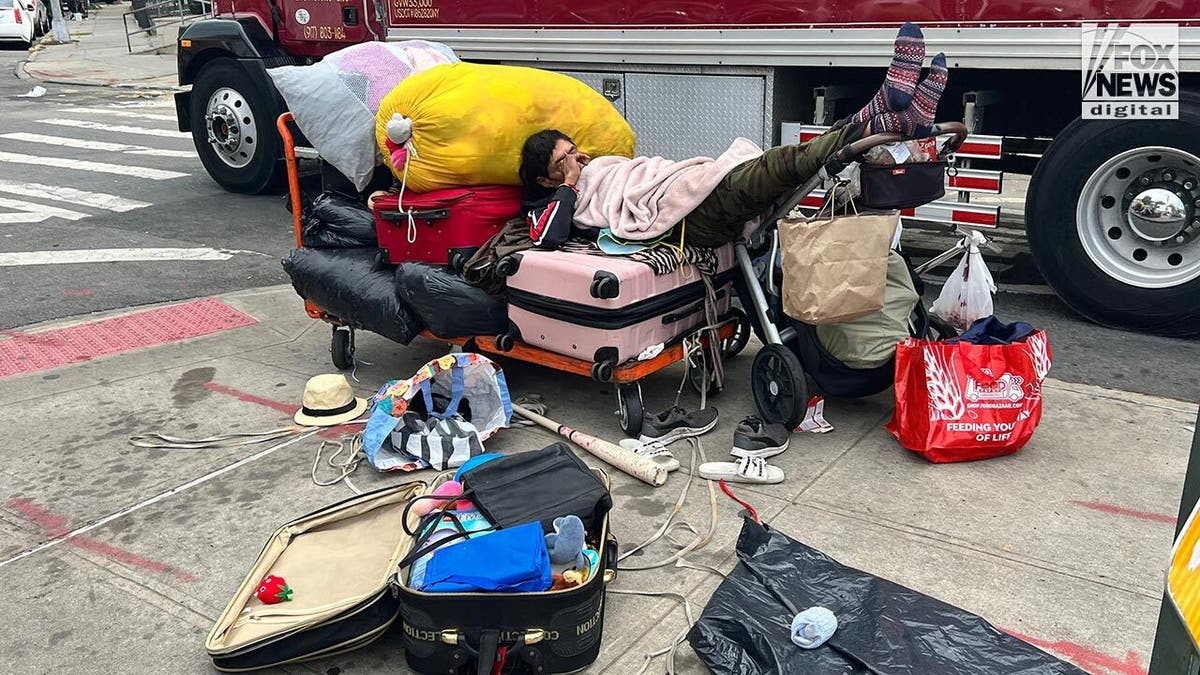 A man asleep on a street surrounded by trash and clothes
A man asleep on a street surrounded by trash and clothes
Image showing a man asleep on a trash-strewn street, symbolizing the deteriorated conditions in the Roosevelt Avenue area.
 AOC-Brothel story
AOC-Brothel story
Image collage featuring Ramses Frías, Curtis Sliwa, Rep. Alexandria Ocasio-Cortez, and City Council member Francisco Moya, key figures in the discussion surrounding Roosevelt Avenue’s issues.
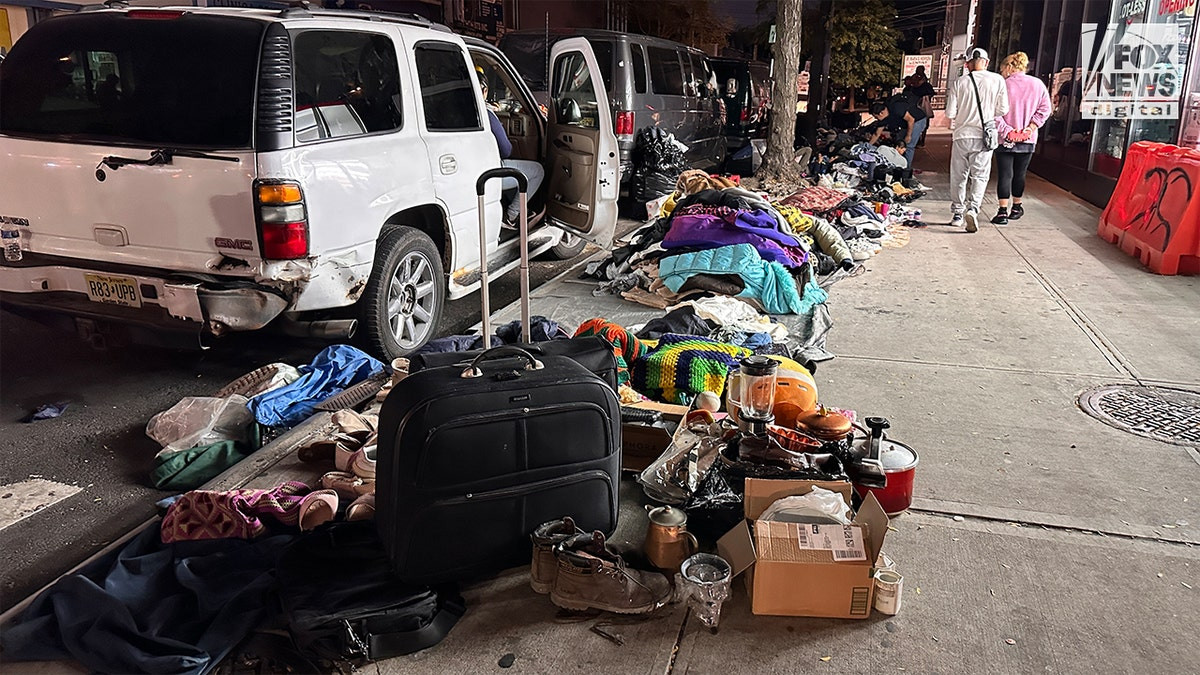 Used clothes and other used items for sale along a clogged sidewalk
Used clothes and other used items for sale along a clogged sidewalk
Image depicting used clothes and goods for sale on a crowded sidewalk, representing the illegal vending issue on Roosevelt Avenue.
 Prostitutes at work in Queens, New York City, AOC
Prostitutes at work in Queens, New York City, AOC
Image showing alleged prostitutes at work in Queens, New York City, further emphasizing the open prostitution problem in AOC’s district.
